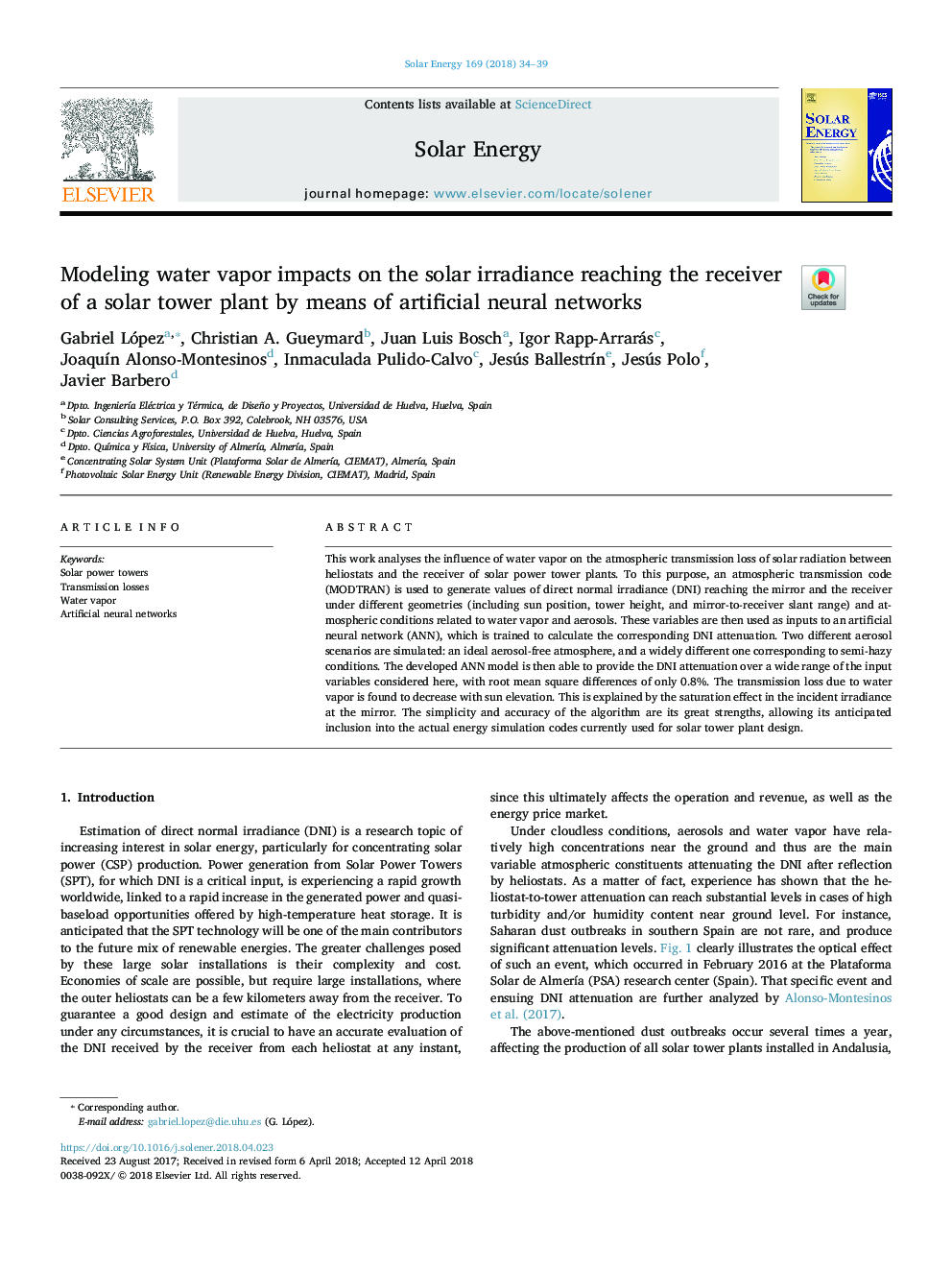| Article ID | Journal | Published Year | Pages | File Type |
|---|---|---|---|---|
| 7935135 | Solar Energy | 2018 | 6 Pages |
Abstract
This work analyses the influence of water vapor on the atmospheric transmission loss of solar radiation between heliostats and the receiver of solar power tower plants. To this purpose, an atmospheric transmission code (MODTRAN) is used to generate values of direct normal irradiance (DNI) reaching the mirror and the receiver under different geometries (including sun position, tower height, and mirror-to-receiver slant range) and atmospheric conditions related to water vapor and aerosols. These variables are then used as inputs to an artificial neural network (ANN), which is trained to calculate the corresponding DNI attenuation. Two different aerosol scenarios are simulated: an ideal aerosol-free atmosphere, and a widely different one corresponding to semi-hazy conditions. The developed ANN model is then able to provide the DNI attenuation over a wide range of the input variables considered here, with root mean square differences of only 0.8%. The transmission loss due to water vapor is found to decrease with sun elevation. This is explained by the saturation effect in the incident irradiance at the mirror. The simplicity and accuracy of the algorithm are its great strengths, allowing its anticipated inclusion into the actual energy simulation codes currently used for solar tower plant design.
Related Topics
Physical Sciences and Engineering
Energy
Renewable Energy, Sustainability and the Environment
Authors
Gabriel López, Christian A. Gueymard, Juan Luis Bosch, Igor Rapp-Arrarás, JoaquÃn Alonso-Montesinos, Inmaculada Pulido-Calvo, Jesús BallestrÃn, Jesús Polo, Javier Barbero,
